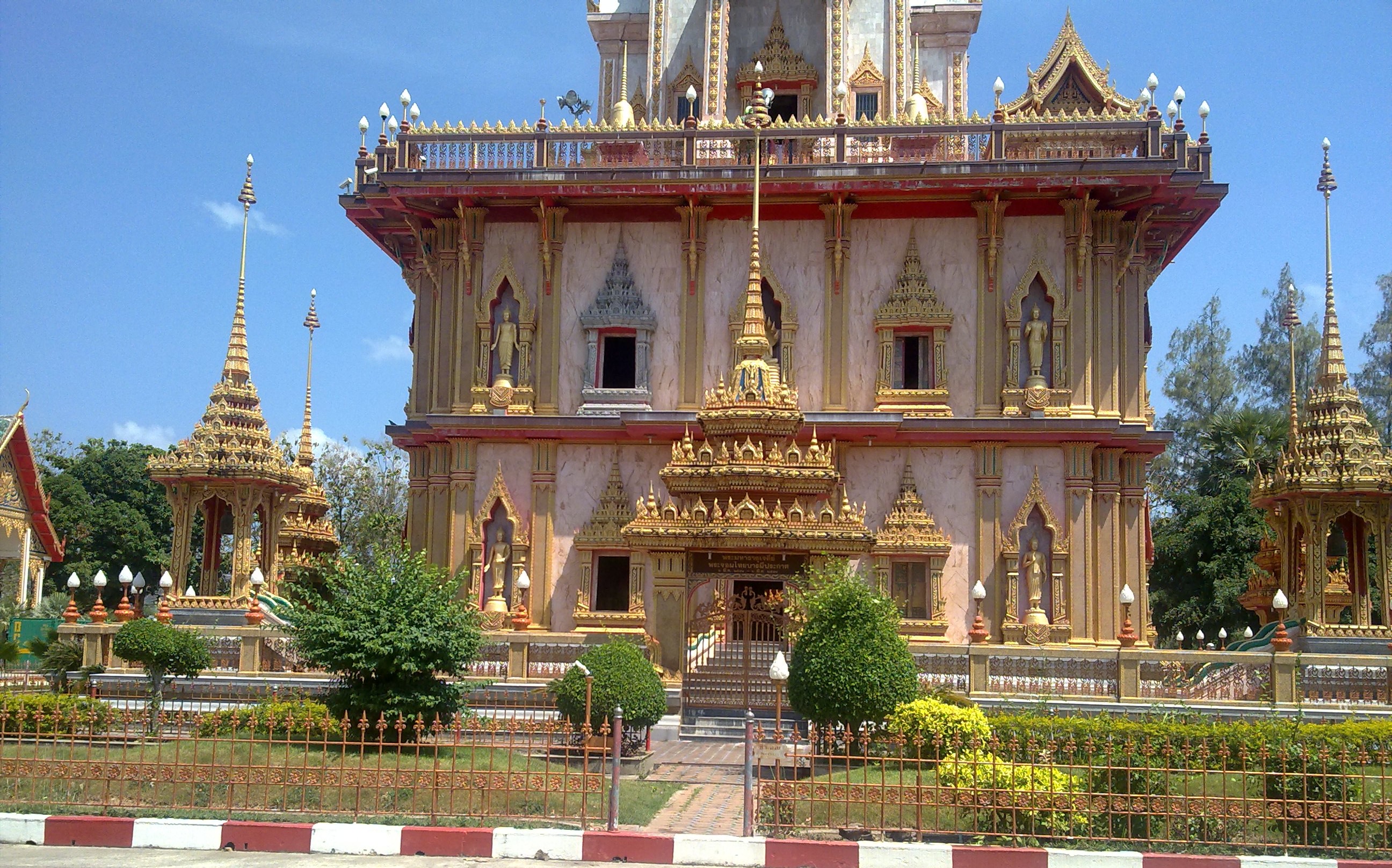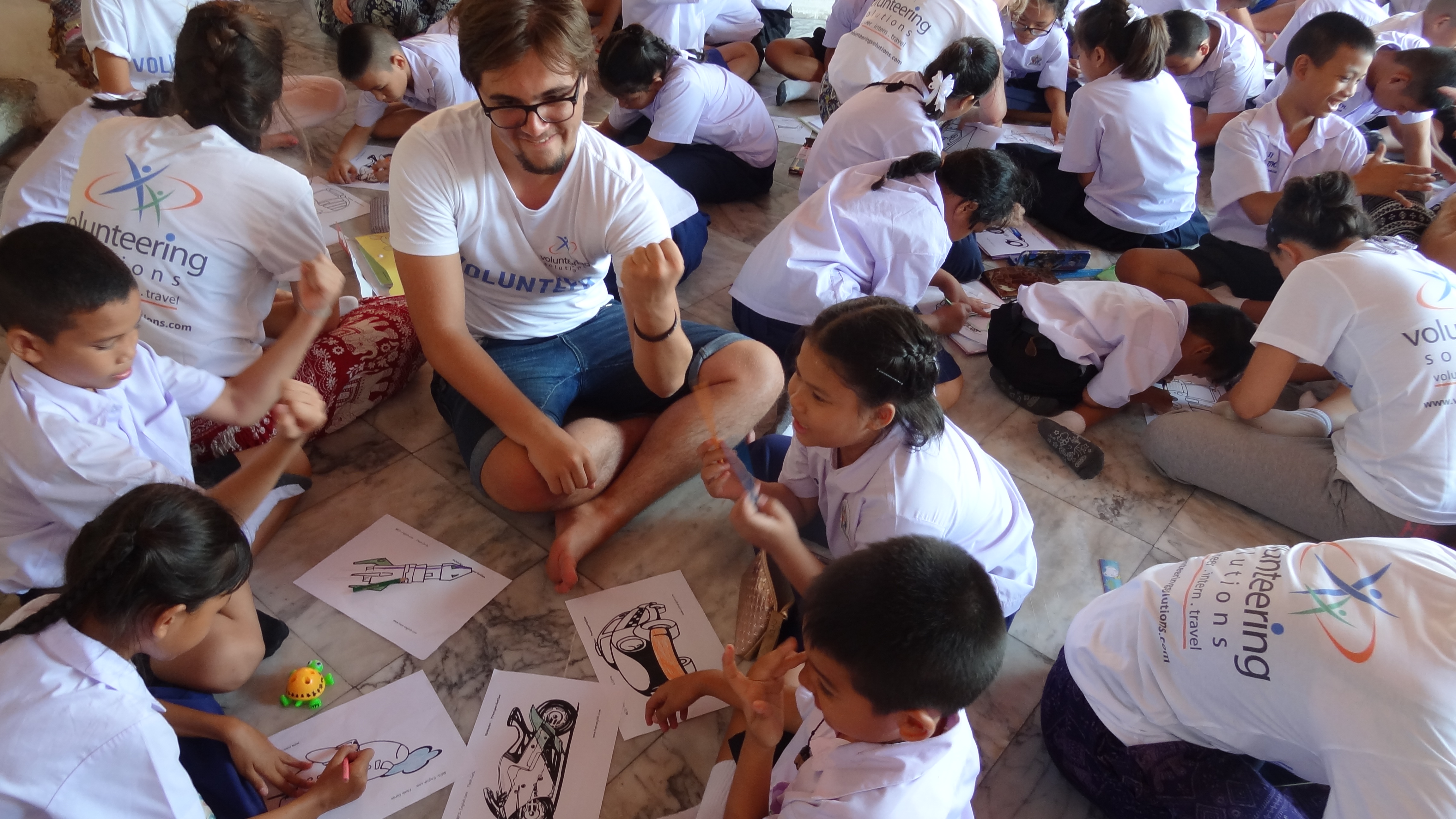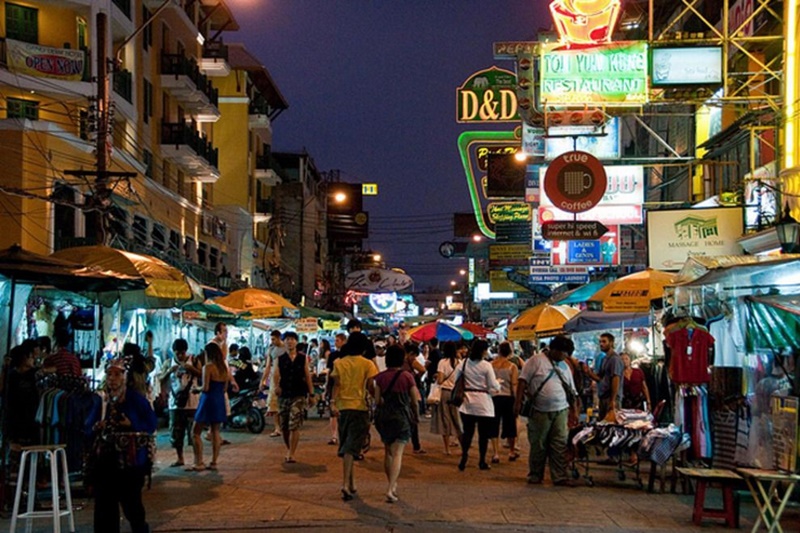Three Weeks Of Transformative Travel Experience In Thailand
463 Views
I wasn’t too versed with the concept of the now popular ‘Transformative Travel’ when I decided to head to Thailand one summer but little did I know that I’d come back with a new found love for it. What is exactly a transformative travel? The Transformative Travel Council describes it as an ‘experience that empowers people to make meaningful, lasting changes in their life.’ TTC has also gone out to describe the critical three aspects of what is a ‘truly a life-altering adventure’ –
- Traveling with intention, openness, and mindfulness
- Engaging in challenging physical and/or cultural experiences
- Taking time for personal reflection & meaning-making
Having taken up the 3-Week Thailand Summer Volunteering Project, I can confidently say that the time spent in Thailand encompassed all of the three critical aspects of transformative travel. While traveling to a different country, with a very different language, culture and beliefs needed me to have an open mind, encountering people from all over the globe challenged my assumptions and beliefs to the core. After all 21 days, in and out, with strangers isn’t a cakewalk? Is it? The week spent in the Elephant Camp in Surin was by far one of the most memorable periods of my life. Not often does one get to jump on elephant poo with 10 other people and make paper out of it.

Week 1
Initial Days In Bankok:
Starting in Bangkok, the first week was certainly fast-paced, in a good way though. A lot of sightseeing gave little time to reflect but once onto the 7-hour journey in Surin, in the latter part of the week, there was ample time to reflect on what the Thai Capital had in store.
One amongst the many and also the first intriguing sights in Thailand was present right at the airport. There was a huge, colorful and awe-inspiring statue representing the ‘Samudra Manthan’, an ancient myth/fable believed in by many in India and Thailand. The statue is symbolic of the religious and cultural connect of Thailand and India.
The 3-headed serpent Naga, named Vasuki, in a part of a spectacular tug-of-war scene with its mid-section body wrapped around a stone, which is actually a mountain, and Hindu God Vishnu, one of the supreme deities in Hindu is sitting on top. Interestingly, ‘Rama’ which inadvertently is the name of all Thai Kings is also the name of a god-prince that is revered in India. The God Prince is believed to be an incarnation of Vishnu, depicted in the statue and thus is the most prominent and common thread between the two countries.
But what I kept wondering was even though the country does not have an official religion and most of its population follows Buddhism, there was a Hindu statue right in the middle of the airport. Did it signal any affiliation to the Indic roots of the country? I wasn’t sure but even then it was an intriguing site to watch.
Orientation, Bangkok City Tour and Volunteering In Temples:
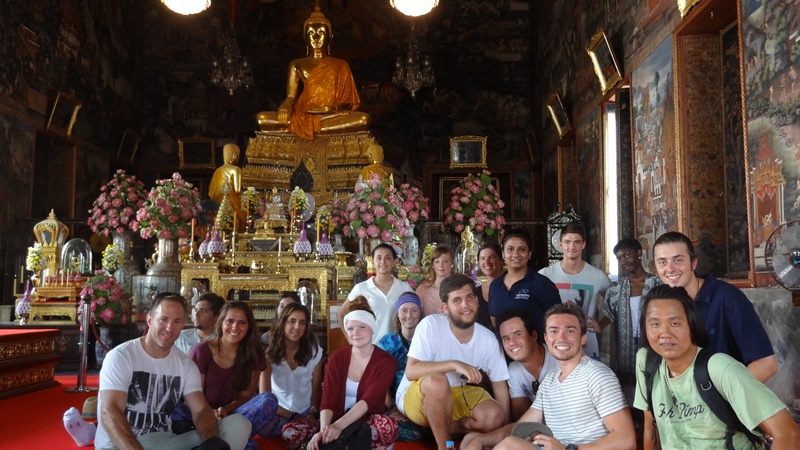
What followed was on orientation session with the VolSol local coordinator and boy was it memorable. Laced with stories of the city and experiences of how different volunteers had different experiences, one couldn’t have been more pumped about the journey after the orientation session. One of the most exciting parts of my journey was also the very many different kinds of people in my group. Few from the States, several from Spain and Ireland, one from Germany, one from London, it was an interesting potpourri of cultures and experiences in the entire journey and that added to the whole experience.
After the first day in Bangkok, the second one was filled with visits to the towering temples of the country such as Wat Pho, Wat Arun, and Wat Phra Kaew, spending the entire day temple hopping although appears ‘touristy’ on paper but was actually an interesting experience and laced with a lot of meaning. Not just as places of worship and spiritual exploration, but also places of learning, the temples of Thailand have a lot of spiritual, emotional and even economic meaning for its people.
Several toddlers and young learners of Thailand visit the temples for free education, books, uniforms, and exposure to Buddhist philosophies. Furthermore, families who cannot afford education after their boys (girls aren’t included) turn 12, head to the temples to become a monk and the temples gladly accept them. The temples also act as a common meeting point and centers of healing through traditional medicines. And what was the best part about this? Meeting young Thai Monks, volunteering to teach and play with the kids of the temples and most importantly getting to talk with kids and learn about their lives made the visits to the temple worth it.
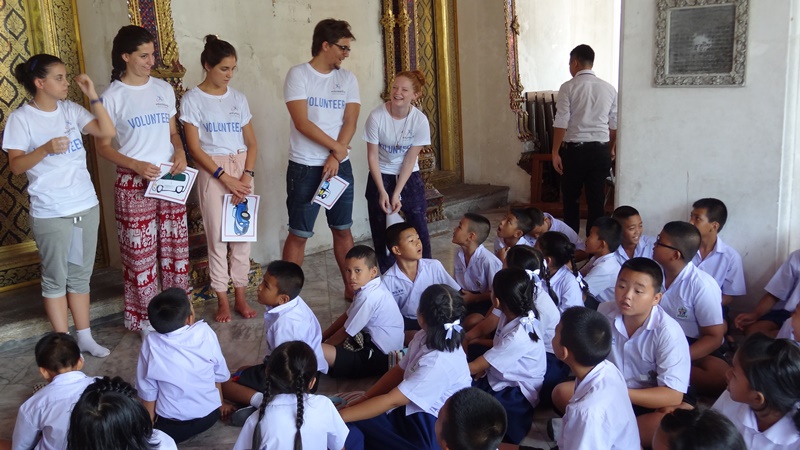
Notably, the grandeur and the architecture that also in many ways visually represents the history of Thailand make the temples an unmissable experience. One could either go around just clicking pictures or take long strolls across the temples and talking to locals to get a better idea of the city.
After the day of temple visits, the following day was full of visits to the many markets of Thailand. While the accommodation during the trip was at Khao San Road which is on THE backpacking street of the world, there were many near-by markets where one could shop local and explore the bylanes of the city. From an early morning floating market journey to buy fruits (and eat insects of different kinds!) and spending an exhaustive day at the gigantic Chatuchak Market.


Week 2
The journey from Bangkok to Surin was a truly memorable one. From getting the time to plug in to listen to my travel playlist to witnessing the countryside of Thailand, the journey was laced with beautiful scenic visuals.
Volunteering In Thai Schools:
Located several kilometers in the interiors of Surin, the 3-Week Thailand Summer Volunteering Project cum play schools was truly rewarding one. Painting the walls of classrooms, playing with kids, helping in preparing their food, interacting with their teachers and mothers and using crayons after ages with the toddlers – the start to Surin couldn’t have been better.
Experience Of The Elephant Village:

The elephant village was definitely the highlight of the trip. Just on the outskirts of urban Surin, Thailand, sits the cutest little village where elephants rearing is the traditional occupation. The lives of the villagers revolve around the Elephant where volunteers come often to help out in feeding, washing and walking with the Elephants. While all these activities are good as they are, the highlight is definitely getting to swim with the volunteers. Revered in the village, the Elephants are no less than gods in the village and rightly so. The glimpse into the lives of the local villagers was also an exciting experience. Waking up at the crack at the dawn and calling it a day as soon the sun sets and working hard all day long was a sync with nature that most people have lost today.
Farms:
Helping cutting bamboos for Elephant feed, helping sow local crops and traveling inside the woods of the village in an open head truck, being off the grid during the entire week in Surin was definitely a welcome break.



Volunteer House:


A basic accommodation, far from the comforts of a swanky hotel room, the volunteer house was the perfect accommodation to live in at the Elephant Village. The windows made sure one got to see the elephants as soon as one woke up and the hammocks tied around were like a gateway to pure peace. Doing nothing and just watching baby elephant reach out to its mother for cuddles was an experience which wasn’t mentioned any itinerary but definitely stood out and worth coming back for.
Native Thai Kitchen:
Home cooked meals by locals were good but what was better was cooking with the locals and learning the basics of Thai cooking along with several other volunteers. Better than any restaurant meal, the conversations during the meal preparation and standing in line to eat that meal is an experience few other journeys offer.
Silk Village:

Known for its silk production, a visit to the silk village was a great opportunity to do some local shopping – truly authentic local shopping. Woven by local women in Surin, the village has a distinct Thai style of weaving not seen at anywhere else.

Week 3
Jungle Trails In Khao Yai National Park:
Featured in the movie ‘The Beach’, the hiking and wildlife gazing in Khao Yai was time well spent in the wilderness. Especially the wide expanse of roads leading to these roads less traveled, the trip had a couple treks across the park. Furthermore, Khao Yai also had some beautiful waterfalls to visit – Heow Suwat (Suwat Abyss) and Heow Narok (Hell’s Abyss). The falls shoot straight down from a high cliff in one forceful plunge. In the rainy season, the walking trails can be especially slippery and need a lot of caution.
Bangkok Bike Trails:
Back in the capital city after having spent a lot of time in the Thai countryside, the Bangkok bike trails are just the experience one needs to explore the city more. It grants more freedom. After the narrow bylanes of a bustling city like Bangkok have more stories to tell than the oft-frequented markets and ‘absolute must-dos’
Khao San Strolls:
Being back to Bangkok had its own share of joys. The Khao San Road is a phenomenon in itself. A great street, filled with backpacker hostels and cozy lit eateries, shopping places, live dance and music shows and basically, the microcosm that is Thailand, well, at least, the touristy part of Thailand. To witness people get tattooed for life, inking their memories to themselves, quite literally was an overwhelming sight. After all, that degree of commitment must have meant a deep imprint of the journey in the very many hearts.
While there were countless experiences that have stayed with me from the journey and several that haven’t but what stood out was how transforming the whole experience was. The Thai people, their traditions, their stories, the fellow volunteers, volunteering with the elephants, and even working on the elephant poo for that matter. It won’t be possible to experience that kind of bliss again until I decide to go back, which I will, sooner than later.

